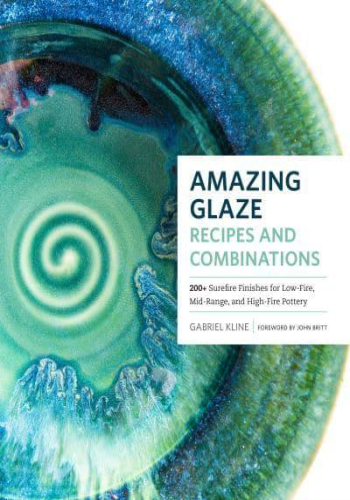Get inspired and get glazing! Amazing Glaze Recipes and Combinations provides a captivating collection of sure-fire glaze recipes and electrifying combinations for low-fire, mid-range, and high-fire potters. Hundreds of photos and technically-edited recipes ensure you'll get the best possible results.
Whether you're searching for excitement at cone 6 or looking for the perfect high-fire shino recipe, you've come to the right place. Join Gabriel Kline, author of Amazing Glaze and founder of Odyssey Clayworks, for page after color-filled page of glazes. Start by learning the keys to success when applying glazes, then choose the temperature range you want to explore first. Gabriel's collection of well-tested recipes draw on his decades of experience as an instructor and leader of a communal arts studio-including current and past student favorites as well as a few timeless gems.
Of course he doesn't stop there! In addition to plentiful tiles showing off two-glaze combinations, Gabriel shares multi-glaze combinations developed through years of trial and error. From waterfall blues to eye-popping bursts of red, there's a rainbow of options. Just as in Amazing Glaze, the recipes have all been technically edited and each one has a photo. By controlling specific gravity and application, the goal is always getting the perfect coat of glaze recipe after recipe.
Special topics like majolica and raku firing provide welcome detours, and a variety of artist features serve as launching points for new explorations. Stunning galleries from today's top artists provide even more glazing ideas.







